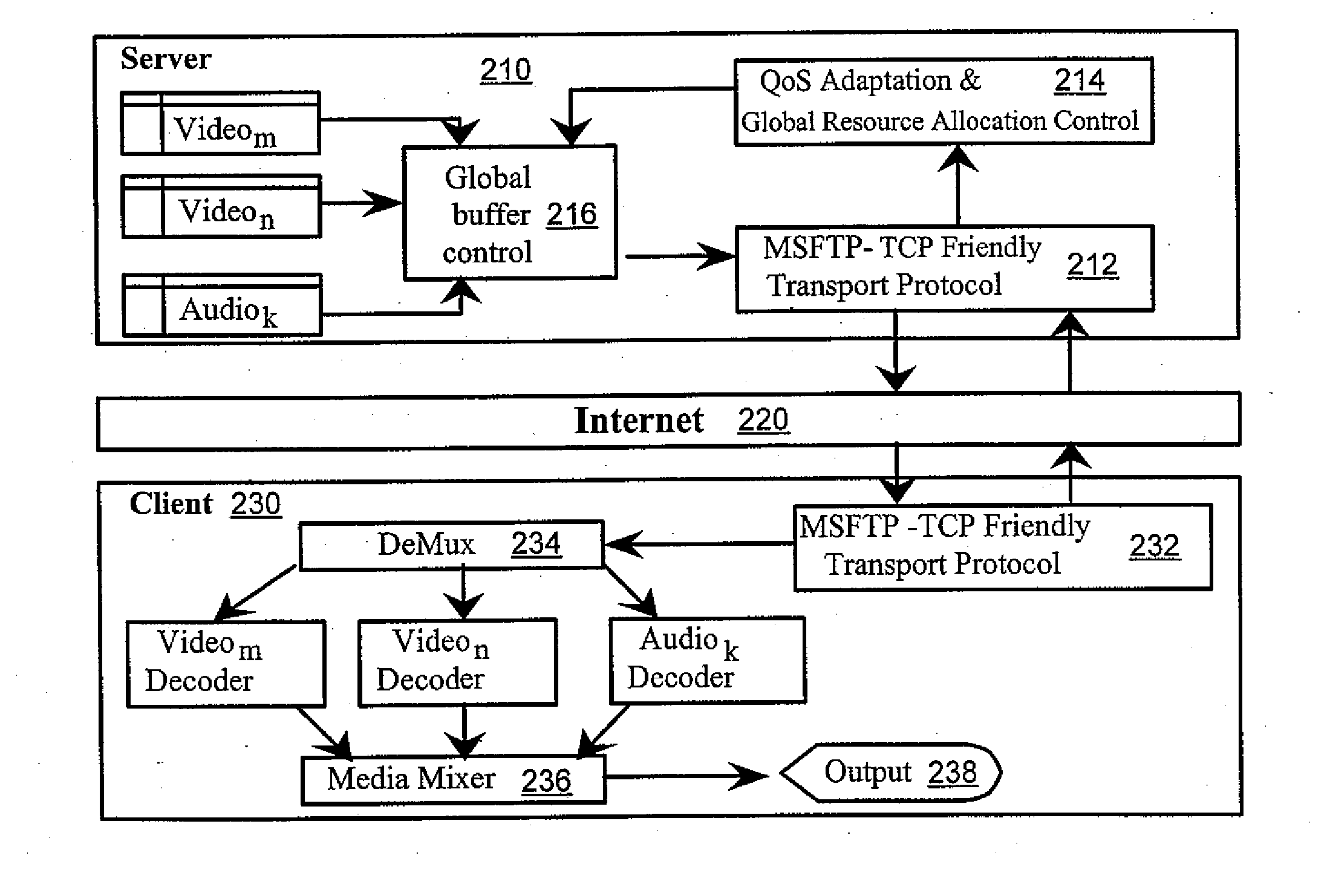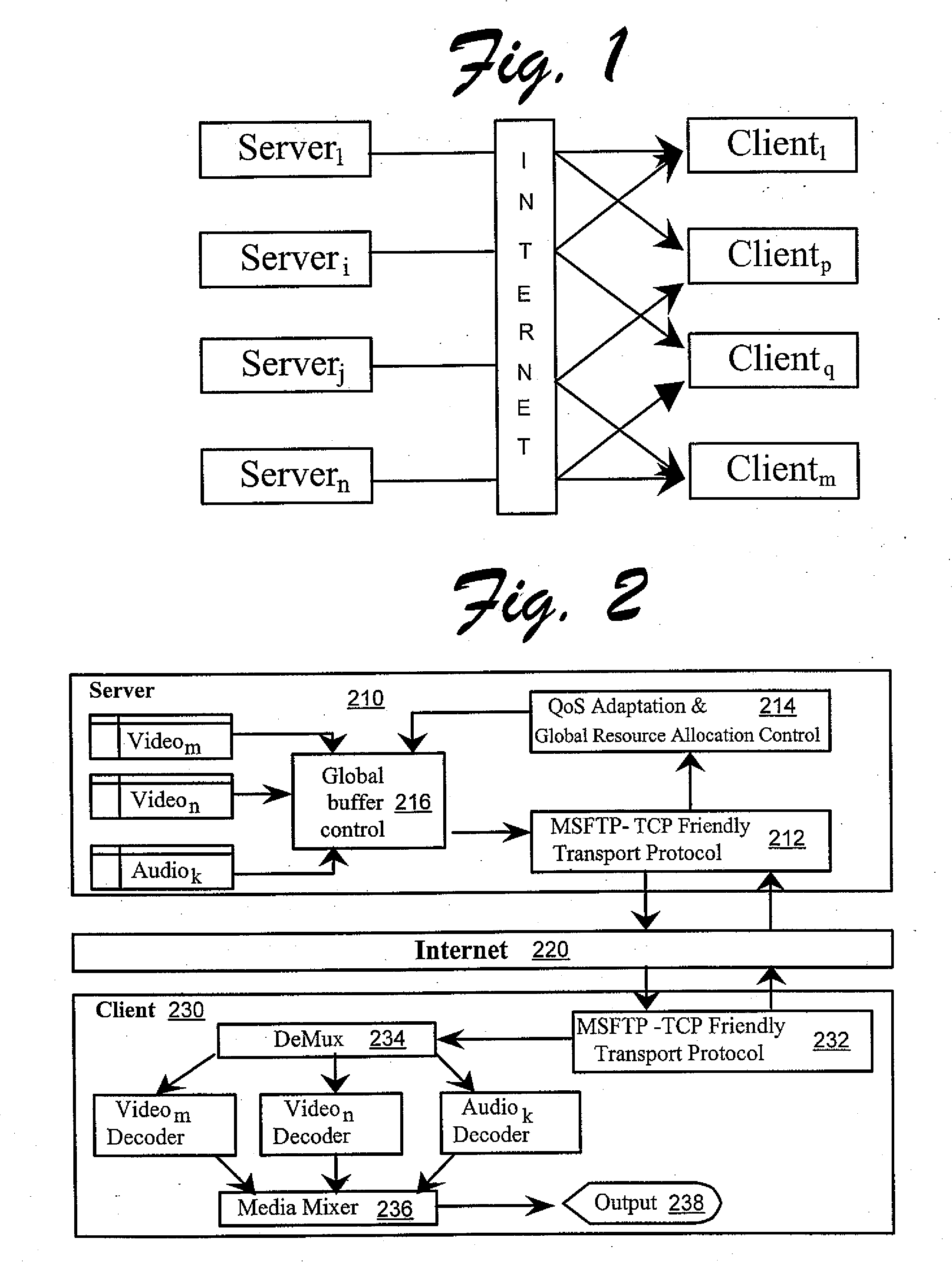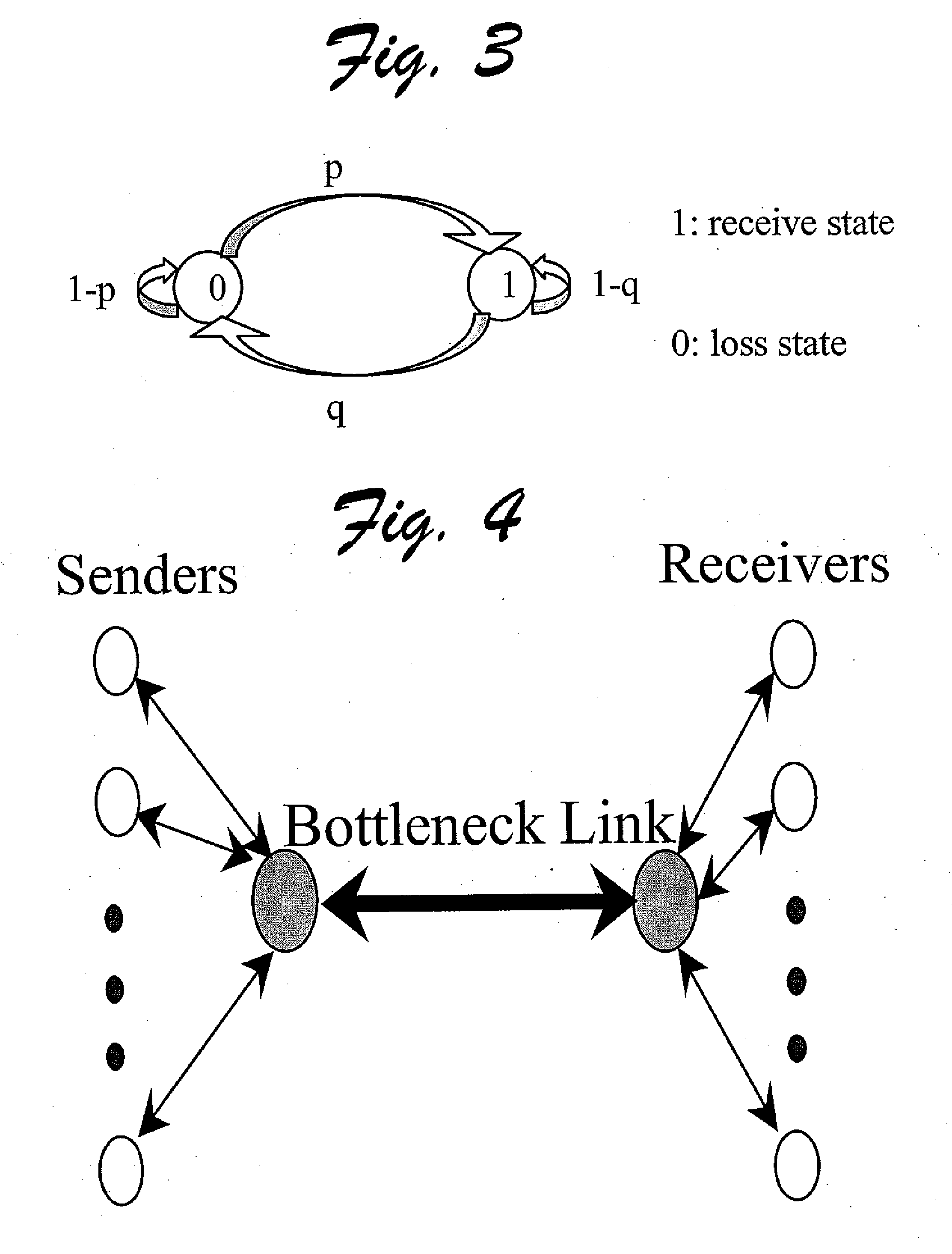Resource Allocation in Multi-Stream IP Network for Optimized Quality of Service
a multi-stream ip network and resource allocation technology, applied in the field of streaming media systems and methods, can solve the problems of inability to many current commercial streaming applications do not behave in a network-friendly fashion, and many conventional streaming applications are unable to perform quality adaptation. adapt to the change of available bandwidth, optimize the end-to-end quality of service, and maximize visual quality
- Summary
- Abstract
- Description
- Claims
- Application Information
AI Technical Summary
Benefits of technology
Problems solved by technology
Method used
Image
Examples
Embodiment Construction
[0039] The following discussion describes a system and method to allocate network resources among multiple media streams. These network resources are allocated within a client-network-server framework (such as the Internet) in a TCP-friendly manner to achieve optimized end-to-end quality of service. Simulation results are given that depict an implementation of the allocation of network resources to yield optimized end-to-end quality of service. A final discussion is then presented of an implementation of a network adaptive rate control scheme, including the results of a simulation of the same.
[0040] 1. Framework for Internet Audio-Visual Streaming
[0041] In media streaming, multiple servers and multiple clients are usually employed in the same session. FIG. 1 depicts a general architecture where several continuous media servers play back AV streams for heterogeneous clients on demand, in which Server1, Serveri, Serverj, Servern are in communication with Client1, Clientp, Clientq, a...
PUM
 Login to View More
Login to View More Abstract
Description
Claims
Application Information
 Login to View More
Login to View More - R&D
- Intellectual Property
- Life Sciences
- Materials
- Tech Scout
- Unparalleled Data Quality
- Higher Quality Content
- 60% Fewer Hallucinations
Browse by: Latest US Patents, China's latest patents, Technical Efficacy Thesaurus, Application Domain, Technology Topic, Popular Technical Reports.
© 2025 PatSnap. All rights reserved.Legal|Privacy policy|Modern Slavery Act Transparency Statement|Sitemap|About US| Contact US: help@patsnap.com



